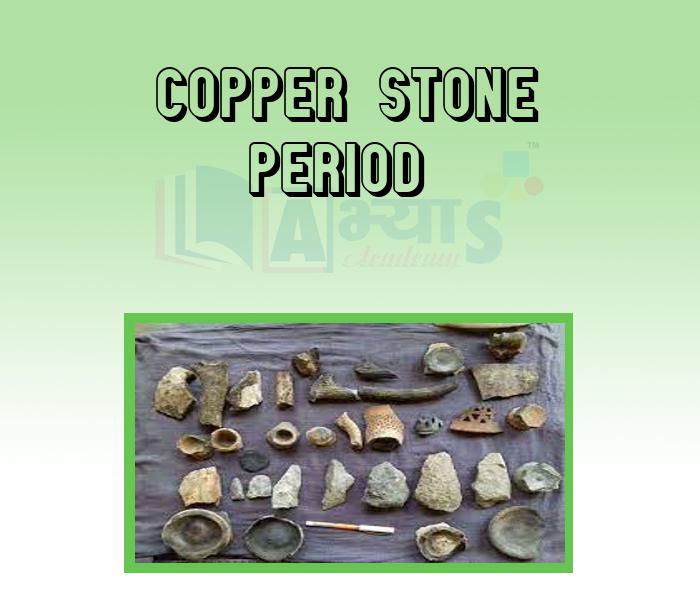Copper Stone Period

Copper-Stone Period
The Chalcolithic or Copper Age is the transitional period between the Neolithic and the Bronze Age. It is taken to begin around the mid-5th millennium BC, and ends with the beginning of the Bronze Age proper, in the late 4th to 3rd millennium BC, depending on the region.
Chalcolithic period marks emergence of use of metals along with stone tools. The First metal to be used was Copper, though they also occasionally used bronze. People of this period were expert coppersmiths. They knew art of copper smelting and were good stone workers as well. The earliest site belonging to this phase are found in south-eastern Rajasthan, Western Maharashtra and Madhya Pradesh and in Eastern India. Some of the important sites of this phase along with their unique aspects are as follows:
Sothi culture was found in area of _____________________ | |||
| Right Option : A | |||
| View Explanation | |||
Which of the following are correct about Copper Stone Age : (a) Copper Stone Period is also known as Chalcolithic Period. (b) Painted pottery was first used by Chalcolithic Period. (c) The Sothi culture (Rajasthan) was widespread in the regions of the Ghaggar Valley. | |||
| Right Option : D | |||
| View Explanation | |||
Which of the following are correct : (a) The main sites of Chalcolithic period - Pandu Rajar, Dhibi, Virbhoomi Mahishadal in Bihar, Sehar, Chirand, Taradih In UP-Revaradih and Nauhan (b) The main sites of Paleolithic period - Pandu Rajar, Dhibi, Virbhoomi Mahishadal in Bihar, Sehar, Chirand, Taradih In UP-Revaradih and Nauhan (c) The main Copper-Stone Cultures - Ahad and Gilund (Banas Valley of south east Rajasthan), Kayatha (MP) Gilund (Ahmed nagar, Maharashtra) . | |||
| Right Option : B | |||
| View Explanation | |||
Students / Parents Reviews [10]
One of the best institutes to develope a child interest in studies.Provides SST and English knowledge also unlike other institutes. Teachers are co operative and friendly online tests andPPT develope practical knowledge also.

Aman Kumar Shrivastava
10thAbhyas is a complete education Institute. Here extreme care is taken by teacher with the help of regular exam. Extra classes also conducted by the institute, if the student is weak.

Om Umang
10thA marvelous experience with Abhyas. I am glad to share that my ward has achieved more than enough at the Ambala ABHYAS centre. Years have passed on and more and more he has gained. May the centre flourish and develop day by day by the grace of God.

Archit Segal
7thMy experience with Abhyas is very good. I have learnt many things here like vedic maths and reasoning also. Teachers here first take our doubts and then there are assignments to verify our weak points.

Shivam Rana
7thAbhyas Methodology is very good. It is based on according to student and each child manages accordingly to its properly. Methodology has improved the abilities of students to shine them in future.

Manish Kumar
10thI have spent a wonderful time in Abhyas academy. It has made my reasoning more apt, English more stronger and Maths an interesting subject for me. It has given me a habbit of self studying

Yatharthi Sharma
10thIt was a good experience with Abhyas Academy. I even faced problems in starting but slowly and steadily overcomed. Especially reasoning classes helped me a lot.

Cheshta
10thMy experience with Abhyas academy is very good. I did not think that my every subject coming here will be so strong. The main thing is that the online tests had made me learn here more things.

Hiya Gupta
8thMy experience was very good with Abhyas academy. I am studying here from 6th class and I am satisfied by its results in my life. I improved a lot here ahead of school syllabus.

Ayan Ghosh
8thIt has a great methodology. Students here can get analysis to their test quickly.We can learn easily through PPTs and the testing methods are good. We know that where we have to practice









